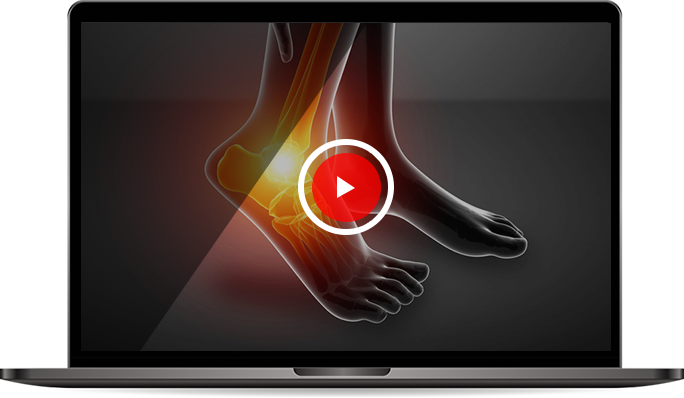- Milwaukie
- Gresham

Board CertificationsAmerican Board of Orthopaedic Surgery

AboutAkash Gupta, M.D.
Dr. Akash Gupta is an orthopedic surgeon with subspecialty training in foot and ankle surgery and reconstruction. He has specialized training in new minimally invasive surgeries (MIS) of several foot and ankle conditions that lead to less pain, faster return to activity, and lower complications.
MinimallyInvasive Surgery
A minimally invasive surgery is a surgery that uses small cuts and special instruments to access the inside of the body. It avoids making large openings and harming the surrounding tissues and organs. It offers advantages such as reduced pain, bleeding, infection, and scarring, and quicker recovery time. It can be done with or without robotic assistance, depending on the type and complexity of the surgery.
Areas of Expertise
- Achilles Tendon Disorders
- Total Ankle Replacement
- Minimally Invasive
Bunion Surgery - Extracorporeal Shockwave Therapy (ESWT)
Achilles Tendon Disorders
Achilles tendon disorders are injuries or abnormalities of the Achilles tendon, which is a strong fibrous cord present behind the ankle that connects the calf muscles to the heel bone.
Ankle Joint Replacement
Total ankle replacement, also known as total ankle arthroplasty, is a surgical procedure performed to relieve pain and immobility due to severe end-stage arthritis at the ankle joint that has not responded to non-surgical treatments.
Minimally Invasive Bunion Surgery
Minimally invasive bunion surgery, also known as keyhole bunion surgery, is a procedure to treat a foot condition called a bunion or hallux valgus, an enlargement of bone or soft tissue around the joint at the base of the big toe
Extracorporeal Shockwave Therapy (ESWT)
Extracorporeal Shock Wave Therapy (ESWT) is a non-invasive method of treating soft tissue injuries. Shock waves are short energy waves with high intensity that can trigger a repair mechanism and reduce pain and sensitivity
Medical Expert Witness
A medical expert witness is a licensed healthcare professional who has the knowledge and experience to testify on a specific medical issue in a legal case. The medical expert witness can provide an independent and objective opinion on the cause and extent of injuries and other relevant matters.
Research & Publications
-
Biomechanical effects of arthroscopic capsulorrhaphy in line with the fibers of the anterior band of the inferior glenohumeral ligamentThere is no consensus as to the amount and direction of capsular plication necessary...
-
Restoration of labral anatomy and biomechanics after superior : comparison of mattress versus simple techniqueBoth simple and mattress repair techniques have been utilized with success for type II superior labral anterior-posterior (SLAP) lesions...
-
Restoration of shoulder biomechanics according to degree of repair completion in a cadaveric model of massive rotator cuff tear: importance of margin convergence and posterior cuff fixation
-
The effect of glenohumeral internal rotation deficit due to posterior capsular contracture on passive glenohumeral joint motionTo date, no study has investigated the biomechanical consequences of glenohumeral internal rotation deficit (GIRD)...
-
Biomechanical comparison of single-row, double-row, and transosseous-equivalent repair techniques after healing in an animal rotator cuff tear modelThe transosseous-equivalent (TOE) rotator cuff repair technique increases failure loads and contact pressure...
-
Axillary view: arthritic glenohumeral anatomy and changes after ream and runThe technique and results of shoulder arthroplasty are influenced by glenohumeral pathoanatomy.
-
Single-staged treatment using a standardized protocol results in functional motion in the majority of patients with a terrible triad elbow injuryTerrible triad injuries of the elbow, defined as elbow dislocation with associated fractures...
-
How do revised shoulders that are culture positive for Propionibacterium differ from those that are not?Many shoulder arthroplasties revised for pain, stiffness, or component loosening are culture positive for Propionibacterium.
-
Anatomic Posterolateral Corner Reconstruction Using a Fibula Cross-Tunnel Technique: A Cadaveric Biomechanical StudyTo compare the biomechanical properties of a fibula cross-tunnel technique for posterolateral corner (PLC)...
-
Pain Management After Outpatient Foot and Ankle SurgeryThe number of opioids prescribed and used has increased precipitously over the past 2 decades for a number of reasons and has led to increases in long-term dependency, opioid-related deaths, and diversion.
Patient Educational Videos & Resources
Keeping our patients well-informed about their condition and treatment procedures in order to improve their healthcare experience.








